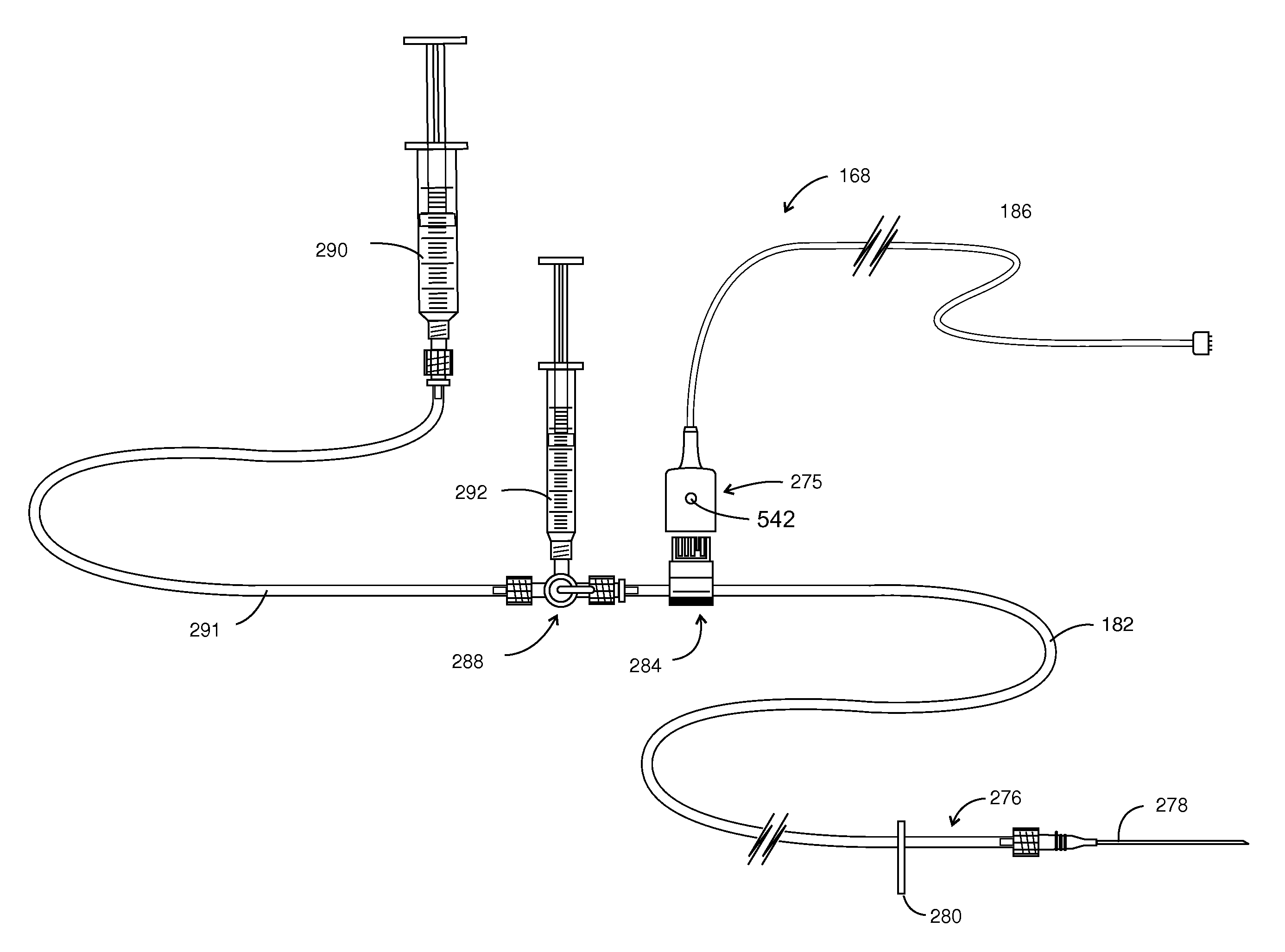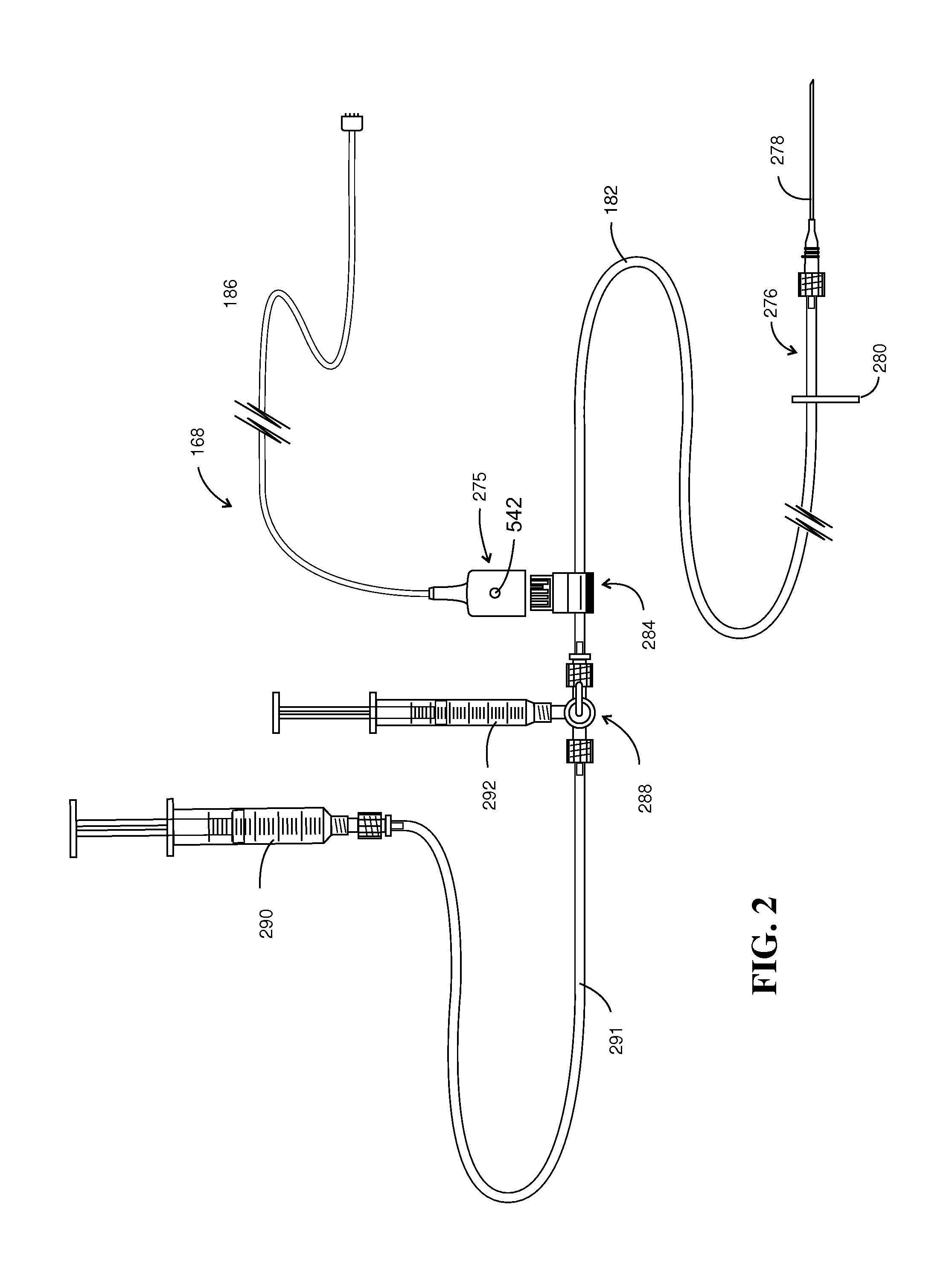System for Non-Invasive Assay of Liver Function
a liver function and non-invasive technology, applied in the field of systems for non-invasive assay of liver function, can solve the problems of low resolution and reproducibility, existing systems, or the level of continued presence of tracking agents, and methods for detection of cardiac anomalies, so as to reduce the incidence of excitation photons and enhance the selective passage of fluorescing photons
- Summary
- Abstract
- Description
- Claims
- Application Information
AI Technical Summary
Benefits of technology
Problems solved by technology
Method used
Image
Examples
example 1
Liver Activity Assay Trials
[0100]Objectives of prospective indicator dosing trials and comparative analysis tests include optimization of the injection protocol to further increase the system sensitivity for monitoring liver function. Another objective is to determine test procedure parameters in preparation for subsequent trials. Further objectives include providing additional data for developing the disclosed method for the calculation and display of the functional flow conductance of a patient's liver. The following protocol demonstrates a testing procedure for determining the ability of different analyte indicators to assay organ function. In particular, the following protocol is designed for demonstrating efficacy of liver targeted analytes. Similar protocols can be readily implemented for demonstrating the efficacy of analytes suitable for assaying other organs. Undue experimentation is not necessary to demonstrate the efficacy of any analyte for use with the minimally invasiv...
example 2
Injection / Drug Delivery Recording Device
[0107]Referring to FIGS. 14 and 15, a dye flow detector 484 is revealed in enhanced detail. FIG. 14A shows two inter-connectable clamp housings 500 and 502 placed on either side of the portion of delivery tubing 504. Additionally, clamp-housing 502 is configured with 4 pins, two of which are seen at 508a and 508b. Two similar pins (not shown) are located on the opposite side of clamp housing 502. These pins are intended to be inserted within holes 510a-510b, within clamp housing 500. Note additionally that clamp housing 500 has a slot 512 formed therein, which provides connector registry. Device 484 performs in conjunction with a flexible circuit shown generally at 514. Flexible circuit 514 is retained in a wrap-around orientation by oppositely disposed support components 516 and 518.
[0108]Turning to FIG. 14C, the flexible circuit 514 is represented at a higher level of detail. In that figure, outboard printed circuit leads 520, 521 and 529 ex...
example 3
Optimization Parameters for Multi-Emitter / Detector Arrays
[0112]Following experimentation, including using animal models, it was determined that sensitivity of the sensor array could be improved by the implementation of multiple emitters and detectors in a sensor array. In order to utilize low concentrations of analyte, such as ICG, sensitivity is highly preferred for assaying organ function. Once a multiple emitter / detector sensor array was implemented, it was recognized that the overall system sensitivity was being hampered by the efficacy of the bandpass filter and collimating plates that were limited by cross talk between related channels in the sensor array. It should also be noted that such cross talk may be even more pronounced when utilizing reflectance mode excitations and detection. The interference filter is necessary in order to reduce incident light arising from the excitation lasers, with the detectors being tuned to detect light emitted as a result of fluorescence. Whe...
PUM
 Login to View More
Login to View More Abstract
Description
Claims
Application Information
 Login to View More
Login to View More - R&D
- Intellectual Property
- Life Sciences
- Materials
- Tech Scout
- Unparalleled Data Quality
- Higher Quality Content
- 60% Fewer Hallucinations
Browse by: Latest US Patents, China's latest patents, Technical Efficacy Thesaurus, Application Domain, Technology Topic, Popular Technical Reports.
© 2025 PatSnap. All rights reserved.Legal|Privacy policy|Modern Slavery Act Transparency Statement|Sitemap|About US| Contact US: help@patsnap.com



